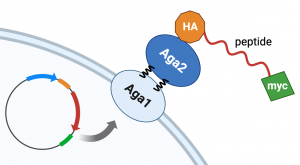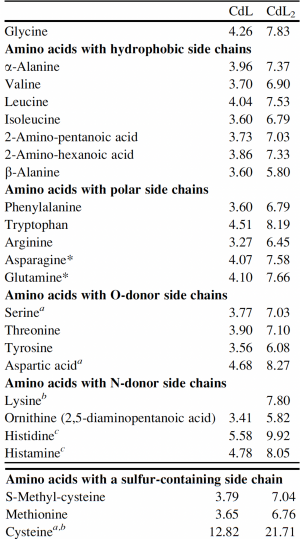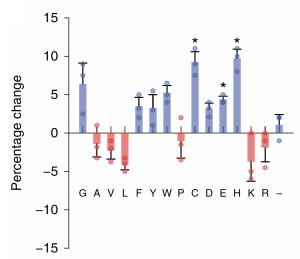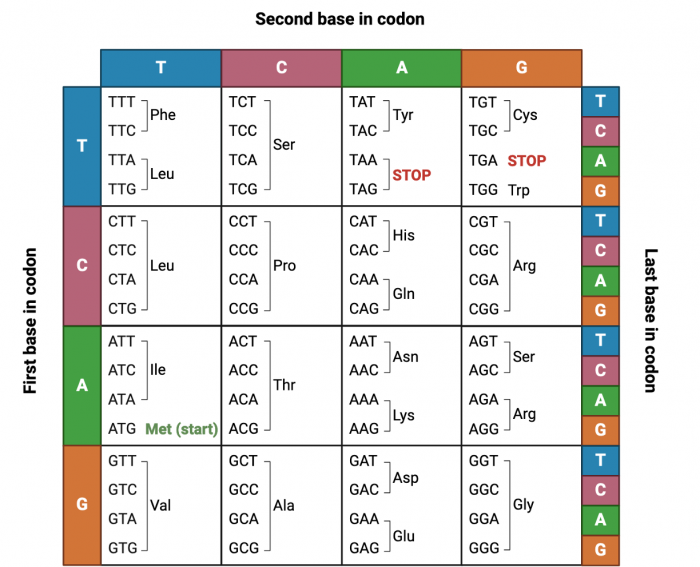Difference between revisions of "20.109(S24):M2D1"
Becky Meyer (Talk | contribs) |
Becky Meyer (Talk | contribs) (→Part 2: Review yeast cell surface display) |
||
| Line 23: | Line 23: | ||
===Part 2: Review yeast cell surface display=== | ===Part 2: Review yeast cell surface display=== | ||
| − | + | [[Image:Sp24 YSD peptide.png|thumb|300px|right|'''Yeast cell surface peptide display with tags''']] | |
In the | In the | ||
| − | |||
| − | |||
| − | |||
<font color = #4a9152 >'''In your laboratory notebook,'''</font color> complete the following: | <font color = #4a9152 >'''In your laboratory notebook,'''</font color> complete the following: | ||
| − | *Based | + | *Based |
===Part 3: Examine data for ΔMet17 yeast cell surface amino acids=== | ===Part 3: Examine data for ΔMet17 yeast cell surface amino acids=== | ||
Revision as of 03:04, 9 March 2024
Contents
Introduction
Heavy metals are typically thought of as metal elements with a relatively high density. Many of these metals are considered precious (gold, silver, platinum) or have commercial value (lead, copper, nickel). Other metals can play an essential health role in small quantities (zinc, iron, manganese). However many of these metals are toxic, even when present in parts per billion. Heavy metals can be released into the environment through a number of activities such as mining, industrial production of consumer products, or disposal of electronic waste.
In this module, you will focus on protein engineering of a cell surface display peptide in Saccharomyces cerevisiae, also known as baker's yeast. We are using this YSD (yeast cell surface display) model to capture the heavy metal cadmium in a recyclable form. This type of protein engineering is an early step in optimizing a "bioremediation" model system. Bioremediation is an approach to cleaning up environmental pollutants by repurposing a known biological process. Typically, bioremediation utilizes microbial and fungal organisms to remove environmental contaminants as these single cell organisms can be fast growing and genetically tractable (i.e. relatively simple to genetically manipulate).
Today you examine what is known about our current S.cerevisiae bioremediation model system. You will explore the genetic metabolic engineering used to induce the yeast to produce hydrogen sulfide, examine the components of yeast cell surface display, and examine previously expressed peptides. You will use this information to rationally design a peptide to express on the yeast cell surface in order to capture Cadmium particles in the most uniform distribution possible. The rest of the module will be devoted to expressing your chosen peptides in our yeast model system, and testing these peptides for their suitability in bioremediation.
Protocols
Part 1: Review metabolic engineering approach to create ΔMet17 yeast
In this module,
In your laboratory notebook, complete the following:
- How
Part 2: Review yeast cell surface display
In the
In your laboratory notebook, complete the following:
- Based
Part 3: Examine data for ΔMet17 yeast cell surface amino acids
Now that you have noted relevant information regarding the ΔMet17 YSD model system, it's time to turn your attention to our metal of interest, cadmium. While there is limited information on the specific mechanism of cadmium capture by peptides, previous literature has indicated that amino acid residues form complexes of differing stability with cadmium. Using the table to the right, examine the reported affinities of cadmium for different amino acid residues. In previous work from the Belcher lab, the ability of particular amino acid residues to remove cadmium from spiked media was tested using yeast display. The results of that experiment are shown at right and detailed in Sun et. al, 2020 (linked on the Mod2 landing page).In your laboratory notebook, complete the following:
- Which amino acids seem like likely candidates to capture precipitating cadmium?
- Which amino acids have lower affinity?
Part 4: Choose a peptide sequence and determine a DNA sequence to encode it
Using the information you have gathered above, you can now determine what peptide you would like express in order to capture precipitating cadmium. ADD WAY MORE
In your laboratory notebook, complete the following:
- What amino acid sequence have you decided?
- What DNA sequence have you chosen to encode your peptide?
Determine the DNA sequence you need to encode your amino acids and upload it to the Class Data page on the wiki before you leave.
- These primers must be ordered by 6pm to arrive in time for your next experiment.
Next day: Perform site-directed mutagenesis






